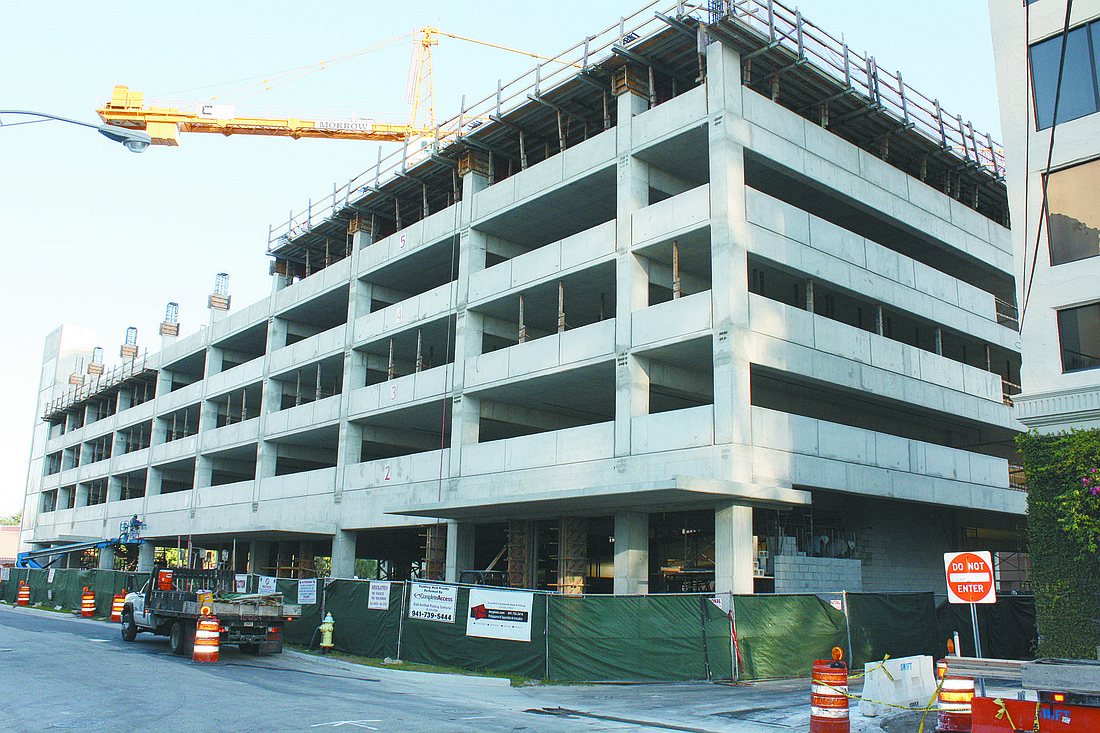- April 19, 2024
-
-
Loading

Loading

After a month of back and forth, the city has decided to try to sell, not lease, the 11,000 square feet of retail space in the soon-to-be-completed Palm Avenue parking garage.
It will immediately begin looking for potential buyers, but will only accept bids from those who will buy all 11,000 square feet.
The City Commission went against the advice of the Community Redevelopment Agency Advisory Board, which recommended the city sell smaller chunks of the space, because that would open up the market to many more potential buyers.
Commissioners did follow the CRAAB’s recommendation, though, to sell instead of lease.
If the city leased the space for the current downtown market rate of $16 to $18 per square foot, it would take up to 23 years for the city to break even.
Commissioners could not come to a consensus last month, when city staff informed them that negotiations to lease the retail space on the garage’s ground floor had gone nowhere.
City management recommended selling that space, so it wouldn’t have to attempt to lease downtown retail space that is difficult for professional Realtors to lease right now.
“We’re not in the business of managing retail property,” said City Manager Bob Bartolotta.
Of the five city commissioners, only Terry Turner wholeheartedly agreed with that assessment.
Mayor Kelly Kirschner and Commissioner Suzanne Atwell believed that leasing the space would allow the city to retain control over what kinds of businesses reside there.
Both city staff and Kirschner said they spoke to commercial real-estate brokers who supported their arguments.
This week, The Sarasota Observer discussed the issue with four local commercial property brokers, and they all agreed that the city made the right decision to sell.
“We don’t want the city in the property-management business,” said John Harshman, of Harshman and Company Real Estate, who also sits on the CRAAB board. “Sell it and get out.”
Harshman said only professional real-estate brokers know how challenging it is to own, lease and manage retail space.
Governments have a hard time doing that, he said, because their employees most likely don’t have that skill set on their resumes.
Broker Ian Black agreed that the city should sell the space.
“But it will be extremely important who they sell it to,” Black said. “If it it’s not a vibrant retail center, the garage will fail.”
Coming up with a strict list of rules and regulations is crucial, according to Black.
“Manage it like a shopping center,” he said. “The stores have to stay open until 8 or 9 p.m.”
Barry Seidel, of American Property Group, had a different stance — initially.
He believes if someone owns property, they should almost always keep it.
“When you own real estate you don’t sell it,” Seidel said. “They should lease it.”
But when informed that a buyer’s group had come forward and offered to start negotiating a sale at market value, about $2 million, Seidel changed his mind.
“That’s about $166 per square foot,” he said. “At those numbers, they’ve got to sell it.”
Six owners of successful downtown businesses, including restaurants Café Epicure, Café Americano and Mediterraneo; upscale rug retailer Art to Walk On; art galleries Dabbert Gallery and State of the Arts; and a third art gallery and antique store that wants to remain anonymous for now; were part of the buyers group.
The group told commissioners last month that it had already secured a bank loan and would be ready to open the doors on six new stores shortly after the garage opened, which is scheduled for December.
Broker Linda Emery, of Michael Saunders and Co., agreed that $166 per square foot is a good price.
“They may want to sell at that price,” she said.
Harshman said there are more considerations to take into account when selling the space instead of leasing. He suggested what commissioners declined to do — try selling the space as individual pieces, instead of as a whole.
“It gives the city a lot more flexibility,” he said. “If the city were to end up with one or two units that were vacant for six, 12 or 18 months, that’s not necessarily a bad thing.”
Downtown Sarasota has about 1 million square feet of retail and office space. Only about 8% of that is currently vacant. There are 16 vacant storefronts in the downtown area on Main Street, Palm Avenue and Lemon Avenue. (See map Page 1A.)
“The market is much tighter than most people believe,” said Harshman.
Black suggested the city hire a commercial real-estate broker and seek his advice on what to put in the retail space and how to do it.
Kirschner had the same suggestion.
Both men can look to Punta Gorda as a guide.
The Charlotte County city completed in August 2009 a downtown public parking garage with 17,000 square feet of retail space.
The city’s initial goal was to sell that space, but it did not find any buyers.
Six months before construction concluded, City Manager Howard Kunick hired a commercial real-estate broker to try to lease the space.
That process has gone slowly, but Kunick said that was not unexpected.
Currently, 10,000 square feet are still vacant — 15 months after the garage opened.
The tenants leasing the 7,000 square feet include a ceramics shop, a Subway sandwich shop and Florida Gulf Coast University.
“We knew it was going to take time,” said Kunick. “We’re encouraged by the space that we’ve leased so far.”
To view a map of the downtown vacant storefronts, click here.
Contact Robin Roy at [email protected].